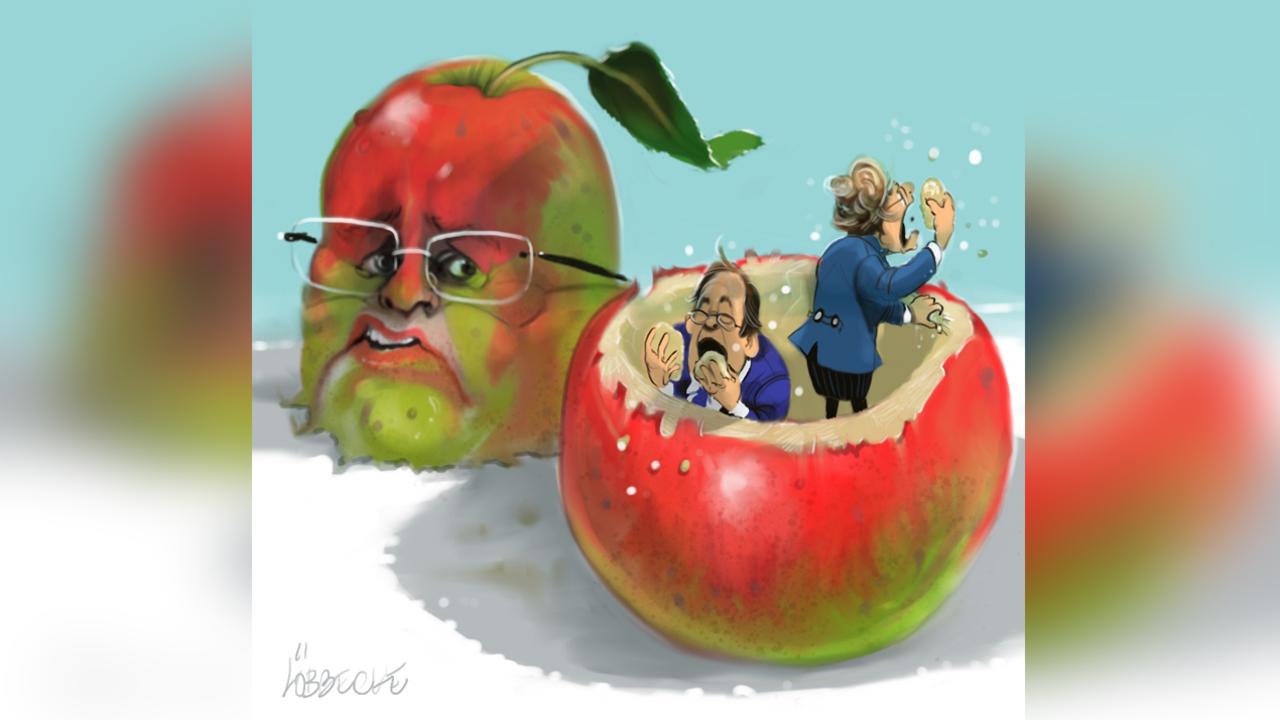With Pauline Hanson deciding to support the government’s proposed tax changes, Australians now face a stark choice between competing visions of our fiscal future.
Already, Bill Shorten has promised to reverse crucial parts of the package.
Labor also is determined to raise a broad range of other taxes, in what would be the largest peacetime tax increase since Federation. In contrast, the Coalition is committed to reducing the tax burden. To say that is not to suggest that we are headed to a nirvana of low, flat and non-distorting taxes. Rather, a centrist agenda and the need for budget repair have led the government to offer modest tax reductions, phased in over many years.
Nonetheless, ensuring that 94 per cent of taxpayers — as against just 63 per cent today — will face a marginal tax rate no higher than 32.5 per cent is a substantial achievement; accompanying it by reductions in company tax would make it all the more significant. It is, however, the comparison to Labor that really brings the alternatives into focus.
Under Labor, the top marginal rate of personal income tax would be stuck at 49 per cent. At the same time, increases in capital gains tax and restrictions on negative gearing, along with the changes to the taxation of trusts and to franking credits, would push the effective top rate to about 55 per cent, compared with 47 per cent under the Coalition.
In international terms, our top rates would be well above the average top rate in every region of the world, with taxpayers hitting those rates at much lower incomes than elsewhere. And our tax rate on capital gains would be the second highest among the advanced economies, with only Denmark taxing capital gains more harshly.
According to Labor, those changes are needed to ensure fairness. The reality, however, is that our income tax is already one of the world’s most progressive.
The OECD estimates that the top 10 per cent of households pay a share of income taxes that is almost 30 per cent higher than their share of income — a proportion exceeded only in the US.
Australians think of the Scandinavian countries as resolutely egalitarian, yet their tax systems are far less progressive than ours, with the gap being even larger when their heavy reliance on regressive value-added taxes is taken into account.
Our personal income tax’s steep progressivity does little to make Australia fairer: the bulk of income redistribution occurs not through taxes but through targeted social transfers.
Nor are the top rates laser-beamed to “soak the rich”: with almost 40 per cent of those in the top fifth of all income earners in any year falling out of that group within 12 months, they affect many middle-income families whose earnings are temporarily boosted by a bonus, asset sale or spike in hours worked.
But what the personal income tax does do, when combined with strictly means-tested social transfers, is give rise to very high effective marginal rates, reducing the incentives to work, especially for second income earners.
The result is a vast waste of human capital, with the share of tertiary-educated women in the labour force who work full time being 20 percentage points lower in Australia than in the US and 15 percentage points lower than in Canada.
That waste will be even greater if Labor has its way — and because the distortion that taxes cause grows more than proportionately as their level rises, the increase in economic loss will be larger yet.
The contrast between Labor and the Coalition on the company tax front is no less stark.
Here, too, rates under Labor would remain stuck above those in the other advanced economies: while the weighted average effective tax rate for the advanced economies is likely to be in the order of 20 per cent to 23 per cent in the near future, ours would be close to 30 per cent.
But Labor’s plan is even more harmful than that suggests: by entrenching a higher tax rate for large than for small companies, Labor would distort the allocation of resources between them, compounding the inefficiency due to the too-high average. And because large companies attract many small investors and sell their goods into mass markets, it is ordinary savers and consumers who would bear the pain — along with those companies’ employees, as our uncompetitive tax rates discourage the companies from investing.
Estimating the aggregate economic cost of Labor’s tax slugs is complicated by the sheer number of increases involved.
But Chris Murphy, whose model of the Australian economy was used by the Henry tax review, estimates that an increase in the top personal rate shrinks our economy by 83c for every dollar of revenue raised.
He also finds that keeping the company tax rate at 30 per cent, rather than the Coalition’s planned reduction to 25 per cent for all companies, would decrease our economic wellbeing by fully $2.39 for every dollar of additional tax revenue.
Going on Labor’s own figures for the revenues it expects to raise, those estimates place the pure economic loss from Shorten’s tax plan at $108 billion over a 10-year period. And that number takes no account of Labor’s hit to capital gains, negative gearing, franking credits and trusts.
Almost a century ago, Joseph Schumpeter, the great economist who served as Austria’s finance minister after World War I, wrote that a country’s ‘‘fiscal constitution’’ encapsulates “the spirit of a people, its cultural level, its social structure, the deeds its policy may prepare”.
“More clearly than anywhere else”, he suggested, a country’s fundamental choices of tax policy presage “the thunder of its history”.
With Labor determined to set that history on a disastrous course, Australians have every reason to be wary of the storms that lie ahead.



